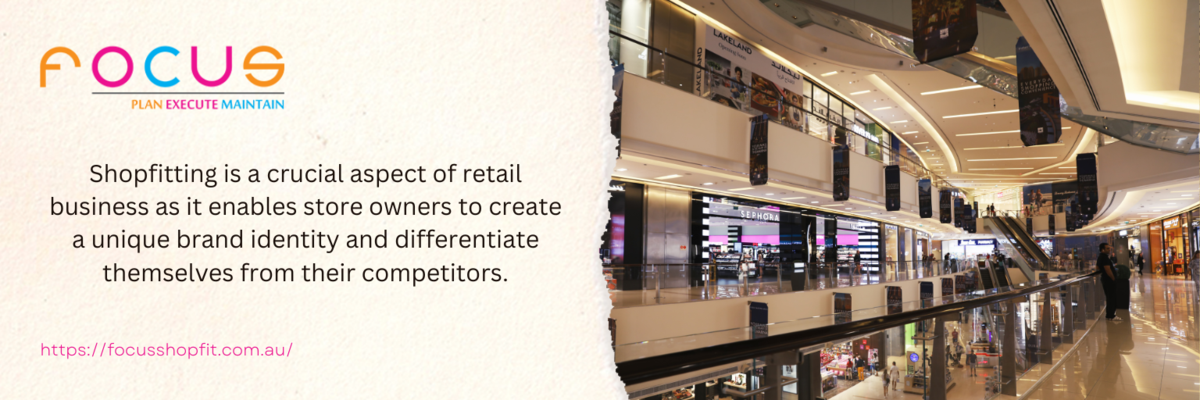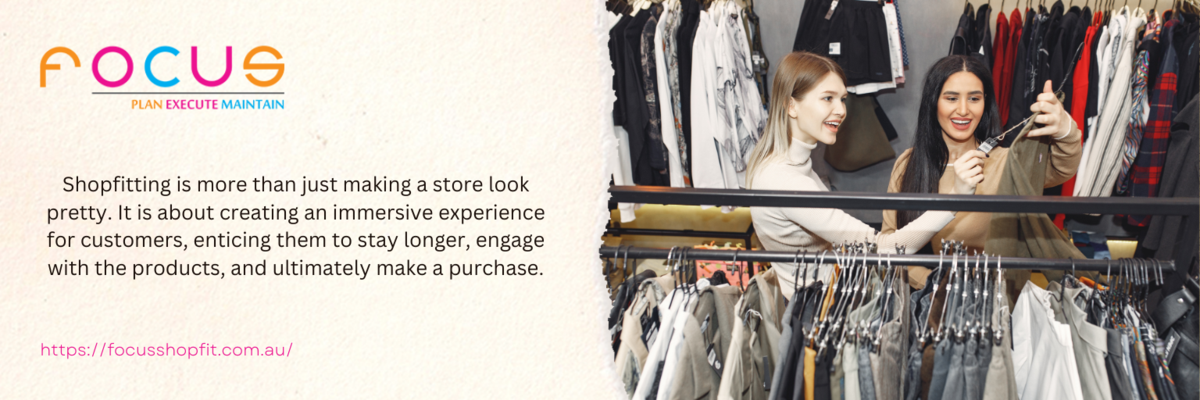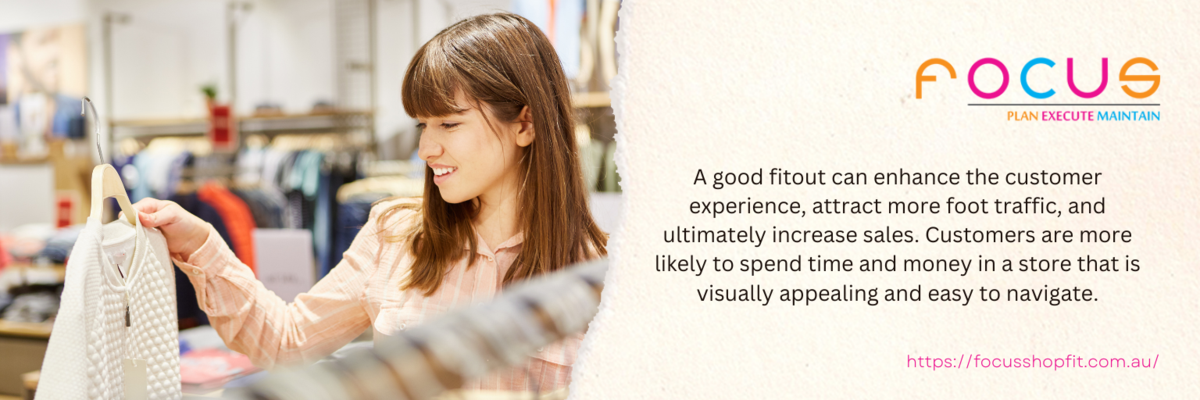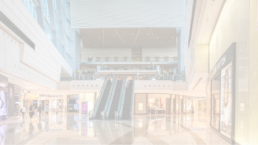Shopfitting Melbourne 101: What is another name for shopfitting?
Shopfitting is an essential aspect of retail business that involves designing, remodeling, and equipping retail stores to enhance their appearance and functionality. In Melbourne, shopfitting has become an integral part of the retail industry as it helps store owners to create a unique brand image and attract customers. This article explores the importance of shopfitting Melbourne, the different terms used to describe shopfitting, the process of shopfitting, shopfitting trends in Melbourne, factors to consider when hiring a professional shopfitting service, benefits of professional shopfitting, shopfitting mistakes to avoid, and a list of shopfitting service providers in Melbourne.

Introduction to shopfitting
Shopfitting is the process of designing and fitting out retail stores to create an inviting and functional space for customers. Shopfitting involves not only the installation of shelves, counters, and display units but also the design of the store layout, lighting, and signage. Shopfitting is a crucial aspect of retail business as it enables store owners to create a unique brand identity and differentiate themselves from their competitors. A well-designed store can attract more customers, increase sales, and enhance the overall customer experience.
The importance of shopfitting in Melbourne
In Melbourne, shopfitting has become an essential aspect of the retail industry as it helps store owners to create a unique brand image and attract customers. A well-designed store can make a significant impact on the customer's perception of the brand. The store's layout, design, and lighting can create a welcoming and comfortable atmosphere for customers, leading to increased sales and customer loyalty. Shopfitting also helps to optimize the use of space, making the store more functional and efficient.
Different terms for shopfitting
Shopfitting is also known as store fitting, retail shopfitting, or commercial fitouts. These terms are used interchangeably to describe the process of designing and fitting out retail stores. Store fitting refers to the installation of fixtures, fittings, and furniture in a retail store. Retail shopfitting involves the design and installation of display units, shelving, and other fixtures to create an attractive and functional retail space. Commercial fitouts refer to the design and construction of commercial spaces, including retail stores, offices, and restaurants.
Understanding the process of shopfitting
The process of shopfitting involves several stages, including design, planning, construction, and installation. The first stage is the design stage, where the shopfitter works with the store owner to create a design concept that meets the store's requirements and budget. The second stage is the planning stage, where the shopfitter creates a detailed plan for the project, including timelines and budgets. The third stage is the construction stage, where the shopfitter builds the fixtures and fittings according to the design and plan. The final stage is the installation stage, where the shopfitter installs the fixtures and fittings in the store.

Shopfitting trends in Melbourne
Melbourne is known for its vibrant retail industry, and shopfitting trends are constantly evolving to meet the changing needs of customers. One of the current trends in Melbourne is the use of sustainable materials in shopfitting. Store owners are increasingly opting for eco-friendly materials such as bamboo, recycled wood, and low VOC paints to create a more sustainable and environmentally friendly store. Another trend is the use of technology in shopfitting, such as interactive displays, digital signage, and mobile payment systems, to enhance the customer experience.
Factors to consider when hiring a shopfitting service in Melbourne
When hiring a shopfitting service in Melbourne, there are several factors to consider to ensure that you get the best value for your money. The first factor to consider is the experience and expertise of the shopfitter. Look for a shopfitter who has experience in designing and fitting out stores similar to yours. The second factor to consider is the quality of materials used. Ensure that the shopfitter uses high-quality materials that are durable and long-lasting. The third factor to consider is the cost of the project. Look for a shopfitter who offers competitive pricing and can work within your budget.
Benefits of professional shopfitting in Melbourne
Professional shopfitting offers several benefits to store owners in Melbourne. One of the main benefits is increased foot traffic and sales. A well-designed store can attract more customers and increase sales. Another benefit is improved customer experience. A well-designed store can create a comfortable and inviting atmosphere for customers, leading to increased customer loyalty. Professional shopfitting also helps to optimize the use of space, making the store more functional and efficient.
Shopfitting mistakes to avoid in Melbourne
When it comes to shopfitting, there are several common mistakes that store owners in Melbourne should avoid. One of the most common mistakes is failing to plan properly. A well-planned project is more likely to be completed on time and within budget. Another mistake is choosing low-quality materials. Low-quality materials can result in fixtures and fittings that are not durable and long-lasting. Another mistake is failing to consider the customer's needs. Store owners should ensure that the store layout, design, and fixtures meet the customer's needs and preferences.
Shopfitting service providers in Melbourne
There are several shopfitting service providers in Melbourne who offer a range of services, including design, planning, construction, and installation. These companies have years of experience in designing and fitting out retail stores and can provide customized solutions to meet the store owner's requirements and budget.

Essential Aspect of the Retail Industry
Shopfitting is an essential aspect of the retail industry in Melbourne. A well-designed store can attract more customers, increase sales, and enhance the customer experience. When hiring a shopfitting service in Melbourne, store owners should consider the experience and expertise of the shopfitter, the quality of materials used, and the cost of the project. By avoiding common shopfitting mistakes and working with professional shopfitters, store owners can create a unique brand identity and stand out in the competitive retail industry in Melbourne.
Shopfitting Brisbane: How much do shop fittings cost?
Shopfitting plays a crucial role in the success of any retail business. It involves designing, building, and fitting out retail spaces to create an appealing and functional environment for customers. In Brisbane, a thriving city known for its vibrant retail scene, shopfitting is even more important. This article will delve into the world of shopfitting Brisbane, exploring the costs involved, the factors that influence those costs, and how to choose the right shopfitting company.

Importance of shopfitting in Brisbane
Shopfitting is more than just making a store look pretty. It is about creating an immersive experience for customers, enticing them to stay longer, engage with the products, and ultimately make a purchase. In a city like Brisbane, where competition among retailers is fierce, a well-designed and thoughtfully executed shopfitting can make all the difference.
A well-designed shopfitting not only enhances the aesthetic appeal of a store but also improves its functionality. It ensures that the layout is optimized for efficient customer flow, making it easier for shoppers to navigate through the space. This can result in increased sales and customer satisfaction.
Factors influencing shopfitting costs
The cost of shopfitting in Brisbane can vary greatly depending on various factors. One of the most significant factors is the size of the retail space. Larger spaces require more materials, labor, and time to complete, which can drive up the cost.
The complexity of the design also plays a role. Intricate designs or unique architectural features may require specialized skills and craftsmanship, which can increase the cost. Additionally, the type of materials used, such as high-quality fixtures and finishes, will also impact the overall cost.
Another factor to consider is the level of customization required. Custom-made fixtures and fittings will generally cost more than off-the-shelf options. This is because they require additional time and effort to design and manufacture.
Understanding the different types of shopfitting in Brisbane
Shopfitting encompasses various aspects, from the layout and design to the installation of fixtures and fittings. Understanding the different types of shopfitting will help you determine which elements are necessary for your store and how they contribute to the overall cost.
- Layout and design: This involves planning the layout of the store, including the placement of aisles, shelves, and checkout counters. The design aspect focuses on creating an aesthetically pleasing and functional space that aligns with the brand image.
- Fixtures and fittings: These are the physical elements that make up the store, such as shelving, display units, counters, and signage. Choosing high-quality fixtures and fittings is essential for durability and visual impact.
- Lighting and electrical: Proper lighting is crucial for showcasing products and creating the right ambiance. Electrical work includes installing power outlets, lighting fixtures, and any additional electrical requirements.
- Joinery and carpentry: This involves custom-made furniture, cabinets, and storage solutions. Joinery and carpentry play a significant role in creating a unique and personalized shopping experience.

Average costs of shopfitting in Brisbane
It is challenging to provide an exact figure for the cost of shopfitting in Brisbane, as every project is unique. However, it is helpful to have a rough estimate to plan your budget.
The cost per square meter can vary depending on the factors mentioned earlier, such as the complexity of the design, level of customization, and quality of materials. It is recommended to consult with a professional shopfitting company to get an accurate estimate based on your specific requirements.
Tips for reducing shopfitting costs
Shopfitting costs can add up quickly, but there are ways to reduce expenses without compromising on quality. Here are some tips to help you keep costs in check:
- Plan and budget: Start by creating a detailed plan and budget for your shopfitting project. Consider which elements are essential and prioritize them accordingly. This will help you avoid overspending on unnecessary features.
- Research and compare: Take the time to research different shopfitting companies in Brisbane and compare their prices and services. Look for experienced professionals who can offer competitive pricing without compromising on quality.
- Consider modular fixtures: Modular fixtures and fittings are pre-made components that can be easily assembled and disassembled. They offer flexibility and cost savings as they can be reused or reconfigured if needed.
- Opt for durable materials: While it may be tempting to choose cheaper materials, investing in durable options can save you money in the long run. Quality materials will require less maintenance and replacement, reducing overall costs over time.
Choosing the right shopfitting company in Brisbane
Selecting the right shopfitting company is crucial to ensure a successful project. Here are some factors to consider when choosing a shopfitting company in Brisbane:
- Experience and expertise: Look for a company with a proven track record in shopfitting. Check their portfolio and client testimonials to assess their capabilities and quality of work.
- Collaboration and communication: Effective communication and collaboration are vital for a smooth shopfitting process. Choose a company that values your input and keeps you informed throughout the project.
- Compliance with regulations: Shopfitting projects must comply with various regulations and building codes. Ensure that the shopfitting company is knowledgeable about these requirements and can handle the necessary paperwork.
- Cost and timeline: Obtain detailed quotes from different companies and compare them based on the scope of work, materials, and timeline. While cost is important, consider the overall value and quality of service offered.
Shopfitting trends in Brisbane
In Brisbane, shopfitting trends are constantly evolving to meet the changing needs and preferences of consumers. Here are some current trends in shopfitting that are gaining popularity in Brisbane:
- Sustainable design: Sustainable shopfitting is becoming increasingly important as consumers are more conscious of their environmental impact. Incorporating eco-friendly materials and energy-efficient lighting can attract environmentally conscious customers.
- Biophilic design: Biophilic design aims to bring nature indoors, creating a calming and rejuvenating environment. Incorporating elements such as living walls, natural textures, and abundant greenery can enhance the shopping experience.
- Technology integration: Integrating technology into shopfitting can enhance customer engagement and streamline operations. This includes interactive displays, digital signage, and contactless payment options.

Is shopfitting worth the cost in Brisbane?
Shopfitting is a worthwhile investment for retailers in Brisbane. It not only enhances the aesthetic appeal of a store but also improves functionality, customer experience, and ultimately sales. While the cost of shopfitting can vary depending on various factors, careful planning, research, and collaboration with a reputable shopfitting company can help you achieve your desired results within your budget. Embracing the latest shopfitting trends can also give your store a competitive edge in the vibrant retail scene of Brisbane.
Shopfitting Darwin: What a Shop Fit Out Includes & What to Expect
Shopfitting Darwin is an essential aspect of creating a successful retail space. The city of Darwin, located in the Northern Territory of Australia, is known for its vibrant retail scene. With a population that continues to grow, the demand for well-designed and functional shop fit outs has increased significantly. In this article, we will explore the importance of a well-designed shop fit out, what is included in a shop fit out, the shopfitting process, benefits of hiring a professional shopfitter, factors to consider when choosing a shopfitting company in Darwin, shopfitting trends in Darwin, costs and budgeting for a shop fit out, and common challenges in shopfitting projects.

Importance of a Well-Designed Shop Fit Out
A well-designed shop fit out is crucial for the success of any retail business in Darwin. It goes beyond simply arranging shelves and displays; it involves creating a space that is aesthetically pleasing, functional, and conducive to sales. A well-designed shop fit out can enhance the customer experience, attract more foot traffic, and ultimately increase sales. Customers are more likely to spend time and money in a store that is visually appealing and easy to navigate. Additionally, a well-designed shop fit out can also reflect the brand identity and create a memorable impression on customers.
What is Included in a Shop Fit Out?
A shop fit out typically includes a range of components that are tailored to the specific needs of the business. These components may include:
- Layout and design: This involves planning the layout of the store to optimize the use of space and create a seamless flow for customers. The design aspect includes choosing the right colors, materials, and finishes that align with the brand image and appeal to the target market.
- Fixtures and fittings: This includes the installation of shelving, display units, counters, and other fixtures that are necessary for showcasing products and providing a convenient shopping experience.
- Lighting: Lighting plays a crucial role in setting the mood of a store and highlighting products. A well-designed shop fit out will incorporate both natural and artificial lighting to create an inviting and visually appealing environment.
- Flooring: The choice of flooring can significantly impact the overall look and feel of a store. It should be durable, easy to maintain, and complement the design aesthetic of the space.
- Signage and branding: Signage is an essential element of any shop fit out. It helps customers navigate the store, promotes special offers, and reinforces brand identity. Well-designed signage can also create a strong first impression and attract potential customers.
- Technology integration: In today's digital age, technology plays a crucial role in retail. A shop fit out may include the integration of point-of-sale systems, interactive displays, and other technologies to enhance the customer experience and streamline operations.
The Shopfitting Process
The shopfitting process typically involves several stages, starting from the initial planning and design phase to the final installation and handover. Here is a breakdown of the typical shopfitting process:
- Consultation and briefing: The shopfitting company will meet with the business owner to understand their requirements, budget, and timeline. This is an opportunity for both parties to discuss ideas and expectations.
- Design and concept development: Based on the consultation, the shopfitting company will create design concepts and layouts that align with the business owner's vision. This phase may involve 3D renderings or mock-ups to help visualize the final result.
- Approval and documentation: Once the design is finalized, the shopfitting company will prepare detailed documentation, including plans, specifications, and cost estimates. The business owner will review and approve these documents before the project moves forward.
- Manufacturing and procurement: The shopfitting company will source materials, fixtures, and fittings required for the shop fit out. Custom-made items will be manufactured according to the approved design.
- Installation and construction: The actual installation and construction phase begins, where the shopfitting company will coordinate tradespeople, manage the project timeline, and ensure that all elements are installed correctly.
- Quality control and handover: Before handing over the completed shop fit out, the shopfitting company will conduct a thorough quality control check to ensure everything meets the agreed-upon standards. The business owner will review the final result and provide feedback if necessary.
- Post-installation support: A reputable shopfitting company will provide ongoing support and maintenance services to address any issues that may arise after the shop fit out is completed.
Benefits of Hiring a Professional Shopfitter
Hiring a professional shopfitter in Darwin has numerous benefits. Here are some key advantages:
- Expertise and experience: Professional shopfitters have extensive knowledge and experience in creating functional and visually appealing retail spaces. They understand the latest design trends, building regulations, and best practices in shopfitting.
- Time and cost savings: By hiring a professional shopfitter, business owners can save valuable time and money. Shopfitters have established relationships with suppliers, allowing them to source materials at competitive prices. They also have the expertise to efficiently manage the entire shopfitting process, ensuring that projects are completed on time and within budget.
- Customization and personalization: Professional shopfitters can tailor the shop fit out to meet the specific needs and preferences of the business owner. They can provide expert advice on layout, design, and materials, helping to create a unique and memorable retail space.
- Quality craftsmanship: Professional shopfitters are skilled in their craft and have access to the necessary tools and equipment to deliver high-quality workmanship. They will ensure that all fixtures, fittings, and installations are done to the highest standard, resulting in a durable and functional shop fit out.
- Compliance with regulations: Shopfitting projects are subject to various regulations, including building codes, safety standards, and accessibility requirements. Professional shopfitters are well-versed in these regulations and will ensure that the shop fit out complies with all necessary guidelines.

Factors to Consider When Choosing a Shopfitting Company in Darwin
When choosing a shopfitting company in Darwin, there are several factors to consider:
- Reputation and experience: Look for a shopfitting company with a proven track record and extensive experience in the industry. Check their portfolio of past projects and read reviews or testimonials from previous clients.
- Expertise and capabilities: Ensure that the shopfitting company has the necessary expertise and capabilities to handle your specific project requirements. This may include experience in specific industries or knowledge of specialized materials and technologies.
- Communication and collaboration: Effective communication and collaboration are crucial for a successful shopfitting project. Choose a shopfitting company that is responsive, attentive to your needs, and willing to work closely with you throughout the entire process.
- Budget and pricing: Discuss your budget with the shopfitting company upfront and ensure that they can deliver a shop fit out that aligns with your financial constraints. Beware of companies that offer significantly lower prices, as this may indicate a compromise in quality.
- Licensing and insurance: Verify that the shopfitting company holds the necessary licenses and insurance coverage to protect both parties during the project. This includes liability insurance and workers' compensation insurance.
- References and recommendations: Request references from the shopfitting company and reach out to their previous clients for feedback. This will give you a better understanding of their reputation and the quality of their work.
Shopfitting Trends in Darwin
Shopfitting trends in Darwin are constantly evolving to meet the changing needs and preferences of consumers. Here are some current trends to consider when planning your shop fit out:
- Sustainable materials: Consumers are becoming increasingly conscious of their environmental impact. Incorporating sustainable materials, such as reclaimed wood or recycled materials, can enhance the eco-friendly image of your store.
- Open and flexible spaces: Open floor plans and flexible spaces are gaining popularity in shopfitting. This allows for easy rearrangement of displays and fixtures to accommodate changing seasons or product lines.
- Technology integration: Technology is playing a more prominent role in retail. Consider integrating interactive displays, digital signage, or self-checkout systems to enhance the customer experience and streamline operations.
- Biophilic design: Biophilic design incorporates natural elements, such as plants and natural lighting, into the retail space. This creates a calming and inviting atmosphere, which can positively impact customer experience and well-being.
- Minimalistic aesthetics: Minimalism continues to be a popular design trend. Clean lines, neutral colors, and clutter-free spaces create a modern and sophisticated look that appeals to many consumers.
Costs and Budgeting for a Shop Fit Out in Darwin
The cost of a shop fit out in Darwin can vary depending on various factors, including the size of the space, the complexity of the design, and the materials used. It is essential to establish a realistic budget and consider the following cost components:
- Design and planning: This includes the fees charged by the shopfitting company for the initial design and planning phase.
- Materials and fixtures: The cost of materials and fixtures will depend on the quality, brand, and quantity required for the shop fit out. It is crucial to strike a balance between quality and affordability.
- Labor and installation: Labor costs will vary based on the complexity of the installation and the number of tradespeople required. It is advisable to obtain detailed quotes from multiple shopfitting companies to compare prices.
- Technology and equipment: If you plan to incorporate technology or specialized equipment into your shop fit out, factor in the cost of purchasing or leasing these items.
- Contingency: It is wise to allocate a contingency budget to account for any unexpected expenses or changes that may arise during the shopfitting process.
Remember that investing in a well-designed shop fit out is an investment in the success of your retail business. It is essential to consider the long-term benefits and return on investment when determining your budget.
Common Challenges in Shopfitting Projects
Shopfitting projects can present various challenges that need to be addressed to achieve a successful outcome. Some common challenges include:
- Time constraints: Shopfitting projects often have tight deadlines, especially for businesses that need to open on a specific date. It is crucial to work with a shopfitting company that can effectively manage the project timeline and ensure timely completion.
- Coordination of tradespeople: Shopfitting involves the coordination of various tradespeople, such as electricians, plumbers, and carpenters. Effective communication and coordination are essential to ensure that all elements come together seamlessly.
- Budget management: Sticking to a budget can be challenging, especially when unexpected expenses arise or changes are requested during the project. Clear communication with the shopfitting company and regular monitoring of expenses can help manage the budget effectively.
- Adherence to regulations: Shopfitting projects must comply with various regulations, including building codes, safety standards, and accessibility requirements. Failure to comply can result in delays or non-compliance penalties. Hiring a professional shopfitter who is familiar with these regulations is crucial.
- Quality control: Ensuring that all elements of the shop fit out meet the desired quality standards can be challenging. Regular inspections and open communication with the shopfitting company can help address any quality issues promptly.
By being aware of these common challenges and working closely with a professional shopfitter, you can overcome them and achieve a successful shop fit out.

Creating the Perfect Shop Fit Out in Darwin
Shopfitting Darwin is an important consideration for any retail business looking to succeed in the vibrant market. A well-designed shop fit out can enhance the customer experience, attract more foot traffic, and ultimately increase sales. By understanding the components of a shop fit out, the shopfitting process, the benefits of hiring a professional shopfitter, factors to consider when choosing a shopfitting company in Darwin, shopfitting trends, costs and budgeting, and common challenges, business owners can make informed decisions and create the perfect shop fit out for their retail space. Remember, investing in a well-designed shop fit out is an investment in the success and growth of your business in Darwin.
Shopfitting Adelaide: What a Shopfit Includes
Shopfitting Adelaide – Shopfitting is a crucial aspect of creating a successful retail space in Adelaide. It involves the process of designing, planning, and fitting out a shop or commercial space to optimize its functionality, aesthetics, and customer experience. A well-executed shopfit can make a significant difference in attracting customers, increasing sales, and establishing brand identity.

Shopfitting goes beyond simply installing shelves and counters; it encompasses every aspect of the store, including layout, fixtures, lighting, signage, and even the flow of customer traffic. It requires careful consideration of the target audience, brand image, and the goals of the business. With the right shopfitting approach, a store can create a unique and engaging environment that enhances the overall shopping experience.
The Importance of Shopfitting in Adelaide
In a competitive market like Adelaide, shopfitting plays a crucial role in standing out from the crowd. It is no longer enough for a store to offer great products or services; the physical space must be designed to captivate the attention of potential customers and encourage them to make a purchase. This is where shopfitting comes into play.
An effective shopfitting design can create a welcoming atmosphere that reflects the brand's values and resonates with the target audience. It can help create a memorable experience that encourages customers to return and recommend the store to others. Additionally, a well-designed shopfit can optimize the layout for efficient product display and easy navigation, enhancing the overall shopping experience and maximizing sales potential.
Understanding the Shopfitting Process
The shopfitting process involves several stages, starting from the initial concept development to the final installation. Each stage requires careful planning, coordination, and collaboration between the shop owner, designers, architects, and shopfitters.
The first step is to define the objectives and goals of the shopfitting project. This includes understanding the target market, brand identity, and budget constraints. Once the objectives are established, the design phase begins. Designers create detailed plans, considering factors such as the store layout, fixtures, lighting, signage, and the overall aesthetic appeal.
After the design phase, the construction and manufacturing stage takes place. This involves fabricating and assembling the necessary fixtures, shelves, counters, and other elements of the shopfit. Once everything is ready, the installation phase begins, where the shopfitters bring the design to life by installing the fixtures, lighting, and other components.
Key Components of a Successful Shopfit
A successful shopfit comprises several key components that work together to create a cohesive and visually appealing space. These components include:
- Layout and Flow
The layout of a shop is crucial in determining how customers navigate through the space. A well-designed layout ensures a smooth flow of traffic, guiding customers through various sections and encouraging exploration. It is essential to consider factors such as product placement, checkout counters, and customer service areas to optimize the flow and enhance the overall customer experience.
- Lighting
Lighting plays a vital role in creating ambiance and highlighting products. Well-placed lighting fixtures can draw attention to specific areas or products, creating focal points and adding depth to the overall design. It is important to choose the right type of lighting, such as spotlights, track lights, or ambient lighting, to create the desired atmosphere and showcase products effectively.
- Fixtures and Shelving
The choice of fixtures and shelving is crucial in displaying products in an organized and visually appealing manner. Customized fixtures can be designed to fit the specific needs of the store, maximizing the use of space and ensuring optimal product visibility. The materials, finishes, and colors of the fixtures should align with the overall brand image and aesthetic.

Shopfitting Trends in Adelaide
Adelaide, being a vibrant city with a diverse retail landscape, is constantly evolving in terms of shopfitting trends. Staying up to date with these trends can give businesses a competitive edge and help them create a modern and engaging shopping experience. Here are some current shopfitting trends in Adelaide:
- Minimalist Design
Minimalism has been a popular trend in shopfitting, focusing on clean lines, simplicity, and the use of neutral colors. This design approach creates a sleek and uncluttered look, allowing products to take center stage and enhancing the overall shopping experience.
- Sustainable Materials
With increasing awareness of environmental issues, many shop owners in Adelaide are incorporating sustainable materials into their shopfitting design. This includes using recycled materials, eco-friendly fixtures, and energy-efficient lighting systems. Not only does this align with customers' values, but it also showcases the brand's commitment to sustainability.
- Interactive Technology
Incorporating interactive technology into the shopfitting design can create an immersive and engaging experience for customers. This includes touchscreens, virtual reality displays, and interactive product demonstrations. These technologies not only entertain customers but also provide valuable information and enhance the overall shopping experience.
Choosing the Right Shopfitting Company in Adelaide
Choosing the right shopfitting company is crucial for the success of a shopfitting project in Adelaide. It is important to consider several factors before making a decision:
- Experience and Expertise: Look for a shopfitting company with a proven track record in delivering successful projects. Check their portfolio and client testimonials to gauge their experience and expertise in the field.
- Customization: Every shopfitting project is unique, and it is essential to work with a company that can tailor the design and execution to meet specific requirements. The ability to customize the shopfitting design ensures that it aligns with the brand's vision and objectives.
- Project Management: A reputable shopfitting company should have effective project management skills to ensure that the project is completed within the agreed timeline and budget. Clear communication and coordination between all parties involved are essential for a smooth and successful shopfitting process.
- Quality and Workmanship: Look for a shopfitting company that prioritizes quality and attention to detail. The fixtures and installation should be of high quality, ensuring durability and longevity.
Cost Considerations in Shopfitting
Shopfitting can be a significant investment for any business in Adelaide. It is important to carefully consider the costs involved and establish a realistic budget. Here are some cost considerations in shopfitting:
- Design and Planning: The design phase of a shopfitting project involves the expertise of designers and architects, which can add to the overall cost. It is essential to allocate a budget for design and planning services to ensure a well-executed shopfit.
- Materials and Fixtures: The choice of materials and fixtures can significantly impact the overall cost of the shopfitting project. Higher-quality materials and customized fixtures may be more expensive but can enhance the overall aesthetic appeal and longevity of the shopfit.
- Installation and Labor: The installation phase of shopfitting requires skilled labor and coordination between various trades. It is important to factor in the cost of labor and installation when budgeting for a shopfitting project.
- Permits and Regulations: Some shopfitting projects in Adelaide may require permits and compliance with specific regulations. It is important to consider the associated costs and ensure that all legal requirements are met.
Shopfitting Permits and Regulations in Adelaide
When undertaking a shopfitting project in Adelaide, it is crucial to be aware of the permits and regulations that apply. Failure to comply with these regulations can lead to penalties and delays in the project. Here are some common permits and regulations to consider:
- Building Permits: Depending on the scope of the shopfitting project, a building permit may be required. This ensures that the construction or renovation work meets the necessary safety and structural requirements.
- Electrical and Plumbing Regulations: Any electrical or plumbing work involved in the shopfitting project must comply with the relevant regulations. It is important to engage licensed professionals to carry out these tasks and obtain the necessary permits.
- Fire Safety Regulations: Fire safety is a crucial aspect of shopfitting. It is essential to comply with fire safety regulations, including the installation of appropriate fire detection and suppression systems.
- Accessibility Standards: Shops in Adelaide must comply with accessibility standards to ensure equal access for all customers. This includes accessible entrances, ramps, and facilities for people with disabilities.

Shopfitting Adelaide: Successful Projects
Shopfitting plays a vital role in creating successful retail spaces in Adelaide. It involves careful planning, design, and execution to optimize functionality, aesthetics, and customer experience. By considering key components such as layout, lighting, fixtures, and current trends, businesses can create a unique and engaging shopping environment.
Choosing the right shopfitting company is essential for the success of a shopfitting project. Factors such as experience, customization, project management, and quality workmanship should be considered when making a decision. Additionally, cost considerations and compliance with permits and regulations are crucial aspects to keep in mind.
Successful shopfitting projects in Adelaide have demonstrated the positive impact of well-executed designs. From a boutique clothing store to a specialty coffee shop, the right shopfitting approach can attract customers, increase sales, and establish a strong brand identity.
Shopfitting in Adelaide is an investment worth considering for businesses looking to create a memorable shopping experience and stand out in a competitive market.

